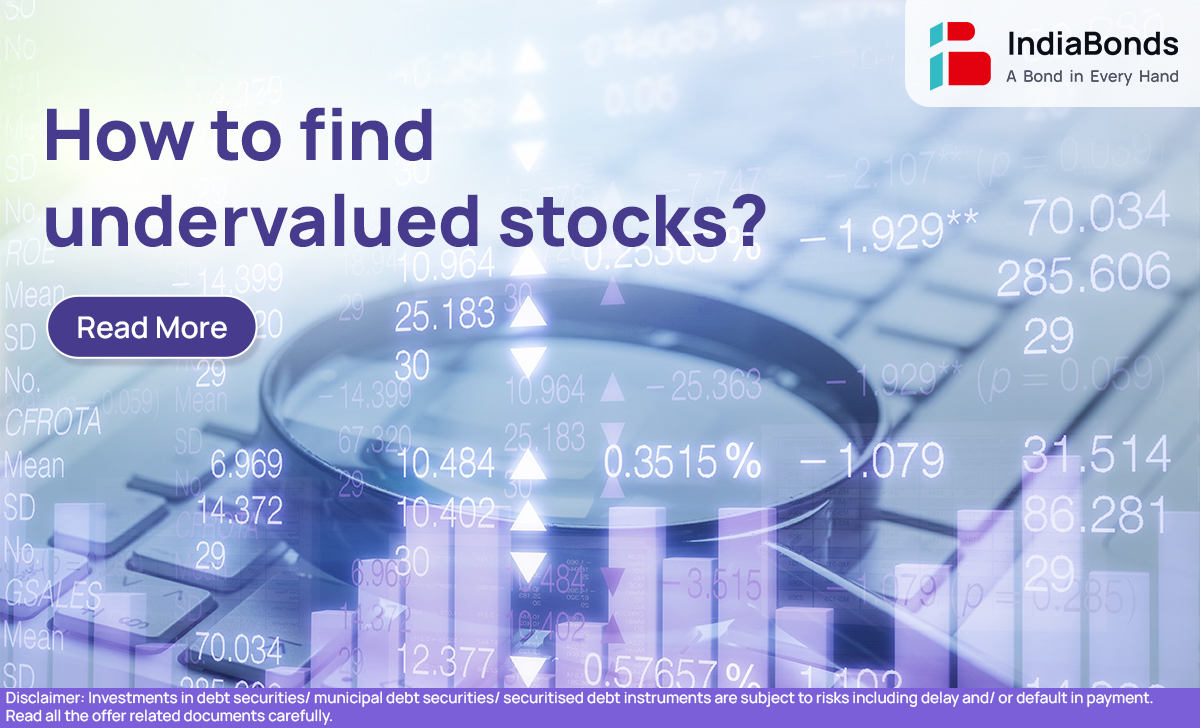How to find undervalued stocks?

If you’ve ever shopped during a sale and thought, “Wow, I just got this at a steal!” — then you already understand the idea behind undervalued stocks.
In the stock market, some companies are just quietly doing great things — making profits, growing steadily — but for some reason, their stock prices don’t reflect that. Maybe the market’s distracted. Maybe there’s been some short-term bad news. Whatever the reason, their true value goes unnoticed… for a while.
The smart investors? They notice. They buy early. And they hold on while the rest of the world catches up.
Let’s break down exactly how to find undervalued stocks, without overcomplicating it.
How to Buy Undervalued Stocks: Trading and Investing
Alright, let’s keep it simple.
An undervalued stock is just a stock that’s worth more than what it’s currently selling for. That’s it. You’re basically buying something valuable while it’s still on the clearance rack.
So, how do you actually buy undervalued stocks?
Here’s a beginner-friendly approach:
- Look at the company, not just the stock – What do they do? Are they profitable? Is their business solid? Would you bet on them long term?
- Check the basics – Things like P/E ratio (price-to-earnings) or P/B ratio (price-to-book) give clues. If they’re lower than their competitors but the company is strong, you might be onto something.
- Follow the news – Sometimes good companies get caught in bad headlines. Stocks drop, but the fundamentals remain strong. That’s often where opportunity hides.
- Trust the process – This isn’t a “get-rich-quick” thing. Buying undervalued stocks is more like planting seeds. Water them, give them time, and watch them grow.
Whether you’re investing for the long haul or thinking about trading undervalued stocks, this foundation helps you make smarter choices — not just lucky guesses.
Trading Undervalued Stocks
If you’re someone who enjoys being hands-on and likes watching the market move, then trading undervalued stocks might interest you more than just holding them for years.
Here’s the deal: markets overreact. A solid company might have one bad quarter, or some temporary issue pops up, and bam — the stock takes a dip. But if the core business is strong, that dip could be your golden entry point.
For trading undervalued stocks smartly:
- Look for overdone sell-offs – Did the stock really deserve that fall? Or was it just panic-selling?
- Use charts to time your entry/exit – Technical analysis helps here. It’s not magic, just patterns.
- Have a plan – Know when to get in, and more importantly, when to get out. Don’t wing it.
Remember, trading is a bit like surfing — timing is everything. And you don’t want to ride every wave.
How to Trade Undervalued Shares?
Let’s say you’re ready to start, but not sure where to begin. Here’s a quick roadmap on how to trade undervalued shares without feeling overwhelmed:
- Start with a stock screener – Set filters for low valuation ratios, solid earnings, and minimal debt.
- Look beyond the numbers – Check if the company’s reputation, products, and leadership match the data.
- Ask: Why is this stock down? – Is it a short-term issue or something deeper? Be honest with yourself here.
- Set your limits – Before you even buy, decide how much profit you’re aiming for — and how much loss you can handle.
And above all? Don’t chase every dip. Some stocks are cheap for a reason. Learn to tell the difference between a hidden gem… and a value trap.
FAQs
How to figure out undervalued stocks?
Start by comparing the stock’s price with the company’s actual financial health. If it’s making money, growing steadily, and still priced low? That’s a green flag. Tools like stock screeners make it easier, even if you’re new.
What is the 7% rule in stocks?
It’s a simple rule: If your stock drops more than 7% from your buying price, it’s time to consider cutting your losses. Think of it as an emotional safety net — to keep you from holding onto a losing trade just because you “hope” it’ll come back.
How does Warren Buffett find undervalued stocks?
Buffett looks for businesses that are easy to understand, consistently profitable, and have good leadership. Then he waits until their stock is selling for less than what he thinks it’s worth. He’s all about value, patience, and playing the long game.
How do people find undervalued stocks?
Some dig into financial statements, some follow expert recommendations, and some use automated tools. It’s usually a mix of research, experience, and being curious. The more you learn, the better your gut gets.
Final Thoughts
Finding undervalued stocks isn’t about luck. It’s about paying attention, doing a bit of digging, and thinking long-term. You don’t need to be a finance pro — just someone who’s willing to learn and stay curious.
So whether you’re planning to hold for years or try trading undervalued stocks for quicker wins, the idea is the same: buy something great before everyone else realizes how great it is.
After all, in investing — just like in life — the best things are often found before the crowd shows up
Disclaimer : Investments in debt securities/ municipal debt securities/ securitised debt instruments are subject to risks including delay and/ or default in payment. Read all the offer related documents carefully.
































